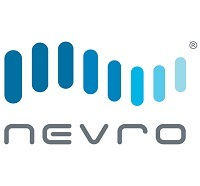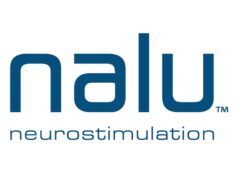 Nevro Corporation has announced the results from data presentations at the 25th North American Neuromodulation Society (NANS) annual meeting (13–15 January 2022; Orlando, USA) supporting the use of 10kHz spinal cord stimulation (SCS) therapy for patients with chronic pain. These new data include results from the SENZA painful diabetic neuropathy (PDN) and SENZA non-surgical refractory back pain (NSRBP) randomised clinical trials.
Nevro Corporation has announced the results from data presentations at the 25th North American Neuromodulation Society (NANS) annual meeting (13–15 January 2022; Orlando, USA) supporting the use of 10kHz spinal cord stimulation (SCS) therapy for patients with chronic pain. These new data include results from the SENZA painful diabetic neuropathy (PDN) and SENZA non-surgical refractory back pain (NSRBP) randomised clinical trials.
Results from the latter trial also supplemented Nevro’s submission to the US Food and Drug Administration (FDA) to gain premarket approval for its Senza SCS system as an NSRBP treatment, expanding on its previous labelling for PDN. The company confirmed the FDA had granted 10kHz therapy premarket approval for this new indication in a separate announcement on 19 January—claiming that Senza is now the only SCS system with a specific, on-label indication to treat NSRBP patients.
“Nevro once again had a substantial presence at this year’s NANS meeting, with data presented from 17 clinical abstracts, including late-breaking results from our SENZA-PDN and SENZA-NSRBP randomised clinical trials, both of which demonstrated significant and sustained outcomes at 18 months in the PDN study and 12 months in the NSRBP study,” said Keith Grossman, chairman, CEO and president of Nevro.
“In addition, both studies demonstrated cost savings with 10kHz SCS in healthcare utilisation at 12 months. No other SCS treatments have demonstrated such benefits with durable clinical outcomes in treating PDN and NSRBP patients, and we believe there is a significant opportunity to expand an innovative treatment option to patients who are unable to find relief with current standard of care.
“We would like to thank our principal investigators Erika Petersen and Leonardo Kapural, all of the SENZA-PDN and SENZA-NSRBP investigators, and the many other clinical investigators studying HFX therapy, for presenting their results at NANS. We are proud to continue our longstanding commitment to investing in the field of neuromodulation and expanding our growing body of clinical evidence to treat underserved patient populations suffering from debilitating chronic pain.”
Durability of 10kHz SCS for PDN
According to a company press release, Nevro’s SENZA-PDN trial—an 18-month, multicentre randomised controlled trial (RCT)—is the largest PDN RCT of SCS treatment conducted to date, with 216 randomised subjects. The data presented at NANS highlighted complete 18-month results, including 12-month crossover results and an analysis of healthcare resource utilisation.
Key findings at 18 months, presented by lead principal investigator Erika Petersen, professor of Neurosurgery and director of Functional and Restorative Neurosurgery at the University of Arkansas for Medical Sciences (Little Rock, USA), included significant and sustained outcomes with 10kHz SCS.
No explants were required for loss of efficacy and, in addition, analysis of healthcare resource utilisation through the first 12 months of the trial indicated reduced spending associated with 10kHz SCS treatment—particularly for hospitalisations.
Twelve-month outcomes on 10kHz SCS for NSRBP
Nevro’s SENZA-NSRBP RCT data included 12-month results comparing the company’s proprietary high-frequency 10kHz SCS plus conventional medical management (CMM) to CMM alone in 159 randomised patients at 15 study centres. According to the release, all primary and secondary endpoints were met (p<0.001).
Key findings at 12 months, presented by lead investigator Leonardo Kapural, medical director for the Carolinas Pain Institute (Winston-Salem, USA), showed profound improvements in pain relief, function, quality of life, awareness of positive change and reduction in daily opioid use in NSRBP patients receiving 10kHz therapy at 12 months post-implant.
Results also included comparable improvements for patients that crossed over from CMM to 10kHz after six months. At six months, 75% of patients who met criteria in the CMM arm elected to crossover and were implanted, while no one in the 10kHz SCS plus CMM treatment arm elected to stop 10kHz therapy. No explants were required for loss of efficacy. Study participants will continue to be followed out to 24 months, the release adds.
Cost-effectiveness of 10kHz SCS plus CMM for NSRBP
Nevro’s SENZA-NSRBP trial is the first RCT to prospectively gather healthcare utilisation information in the NSRBP population—the company claims. This analysis, presented by Jessica Jameson, founder of the Axis Spine Center (Coeur d’Alene, USA) on behalf of the SENZA-NSRBP investigators, supports a cost-effective conclusion for 10kHz SCS over CMM alone, with the cost-effectiveness timeframe dependent on the upfront cost of SCS device and procedure.
Health-related quality of life showed a clinically significant improvement at 12 months post-baseline for all implanted patients and was close to the US norm for age group as well, the release notes.













